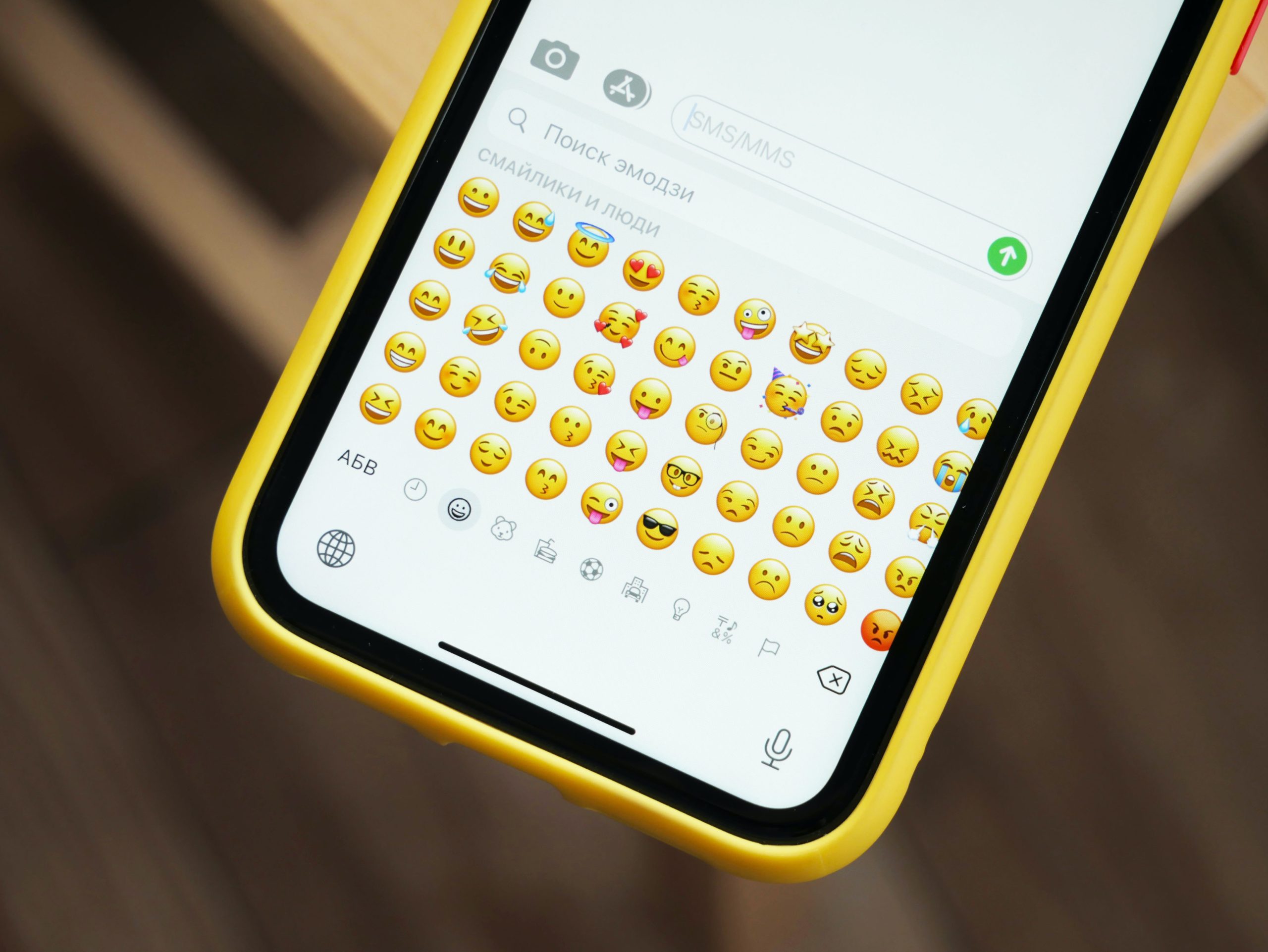The ‘World Emoji Day’, marked on 17 July, is a chance to look back at the developments in communications and the social media lexicon.
Technology has constructed an entire world that humans were only able to dream of and blockbuster films had attempted to portray – sometimes in an exaggerated manner.
While the world has yet to reach the point of flying cars and massive robots roaming the streets – though still possible – as per the predictions of films in the late 20th century, the digital advancements that currently exist are mind-blowing.
Social media applications and smartphones represent some of the top advancements that have made people’s lives more convenient. With a click of a button, people are able to virtually cross geographic borders and stay in touch with one another.
But more than a decade ago, the language of communications shifted with the creation of emojis.
The social media lexicon has formed a new reality in the digitised world by transcending all languages with its ability to add further meaning to conversations.
Whether it is the laugh-cry, thumbs-up, or heart emoji, each icon can add a touch to a text or determine the mood of the conversation.
Nowadays, a mere “happy birthday” text might not come across as genuine without a heart or confetti emoji. An Instagram comment complimenting one’s appearance would also be incomplete without the heart-eye emoji.
The wrong emojis can also create a virtual crisis, such as accidentally clicking on the heart or flower icons when responding to your boss’s texts – which may not always be positive.
Vyvyan Evans, the author of The Emoji Code, summed up the meaning and usage of emojis by describing them as a “body language for the digital age”.
Oxford dictionary even deemed the “face with tears of joy” emoji as the word of the year in 2015 due to its frequent usage globally.
Over the years, emojis’ significance only expanded as they became a universal keyboard on every smartphone.
In 2014, the founder of Emojipedia, Jeremy Burge, dedicated 17 July as the “World Emoji Day”, because it is the date displayed on the “calendar” emoji.
As the world celebrates the importance of emojis, we look back at their history and their impact on people across the globe.
Where did it all start?
In the early days of the digital world in 1982, Scott Fahlman, a computer science professor at Carnegie Mellon University, did not know that he would lead a major transformation in virtual communications by putting together a colon, hyphen and close brackets to create a smiley emoticon “:-)”.
What Fahlman had in mind when he created the emoticon was to lighten up a message that he had sent on the educational institution’s online bulletin board.
“When you’re on a text-only internet medium, people can’t tell if you’re kidding or not. There’s no body language, no facial expressions,” Fahlman told CNN Business last year.
The e-smiley face’s invention was so significant that Guinness World Records labelled it as the “first digital emoticon”.
At that time, emoticons were considered the blueprint of what is now known as emojis.
It was not until 1999 when renowned Japanese graphic artist Shigetaka Kurita created the first set of emojis during his work for “i-mode”, a mobile internet platform from Japan’s main mobile carrier, DOCOMO.
The Japanese entity at the time sought alternatives for the expression of information such as the weather. Kurita then sketched pixelated icons that could easily be selected from a keyboard-like grid on mobiles.
DOCOMO became a trailblazer in the tech world with the success of Kurita’s designs’ ability to simplify information and make it more interactive.
The word “emoji” itself is a compound word, broken into the Japanese words: picture, write, and character.
By 2009, Apple engineers, Yasuo Kida and Peter Edberg, proposed 625 new emojis to the Unicode Standard, a global information technology standard for encoding and handling of text systems.
Unicode later accepted the proposal in 2010, allowing Apple to officially add the emoji keyboard in 2011 to iOS devices. Android then added the keyboards two years later.
In 2015, Unicode diversified its emojis by allowing users to switch the skin tones of the characters.
Today, there are more than 3,000 emojis to select in daily conversations with more proposals being submitted to Unicode on an annual basis to update the keyboard.
“They offer things that words aren’t saying. They clarify that when you say ‘okay,’ what kind of okay is that?” Jennifer Daniel, head of the Emoji Subcommittee for the Unicode Consortium, told CNN Business last year.
Historic usage of images in communication
While emojis are fairly new, the idea of using images to communicate is centuries old.
Historic discoveries pointed to the use of images as a means of communication at least 73,000 years back, from cave carvings to the famous Egyptian hieroglyphics.
Well before the great evolution of words and communication, symbols and diagrams were used to explain complicated events and ideas.
Historians believe that the use of “Manicules” in 1086 represented one of the earliest uses of emojis. The Manicules were small illustrations of pointing hands that were used at the time to point readers to a specific point on a page.
Even in the 1920s, Dadaism emerged in Switzerland as an artistic and literary movement that was created as a response to the First World War. It offered illustrations that provided a sense of mockery to the political, social and economic situation at the time.
This has also spread to artists beyond the borders of Switzerland, such as Berlin, Hanover, Paris and New York, quickly becoming among the most influential movements in modern art.
Fast forward to 2016, New York’s Museum of Modern Art acquired Kurita’s original set of 176 emojis, displaying the modern-day method of communication.
Emojis and psychology
While the usage of images in communication is not a new phenomenon, psychologists remain divided over their view of the lexicon on humans’ ability to express their emotions.
On one hand, some experts believe that emojis diversified the tools of communications, enabling people to better communicate with one another. On the other hand, others generally perceive that the usage of text-speak would hinder linguistic skills.
A survey by YouTube in 2018 found that more than a third of British adults perceived emojis as responsible for the decline of the English language.
Some psychologists also believe that emojis tend to be ambiguous and may not accurately convey thoughts or feelings as the icons have multiple meanings.
In naming examples, experts pointed to the “folded hands” emoji that could mean prayer, a “thank you”, or a “high five”, possibly leading to confusion or even miscommunication.
Dr. Roger Kreuz, a professor of psychology at the University of Memphis, described such new technologies in his book “Failure to Communicate” as contributing to ineffective or misunderstood communication.
“No system for conveying ideas is foolproof, of course. Even face-to-face spoken language, which evolved over thousands of years, can still lead to misunderstandings and confusion,” Dr. Kreuz wrote for Psychology Today in May.
As emojis continue to evolve and dominate daily conversations, the divide over their purpose and impact continues, calling for more in-depth research into the phenomena.
But for now, emojis seem like they are here to stay and develop in the long run.







